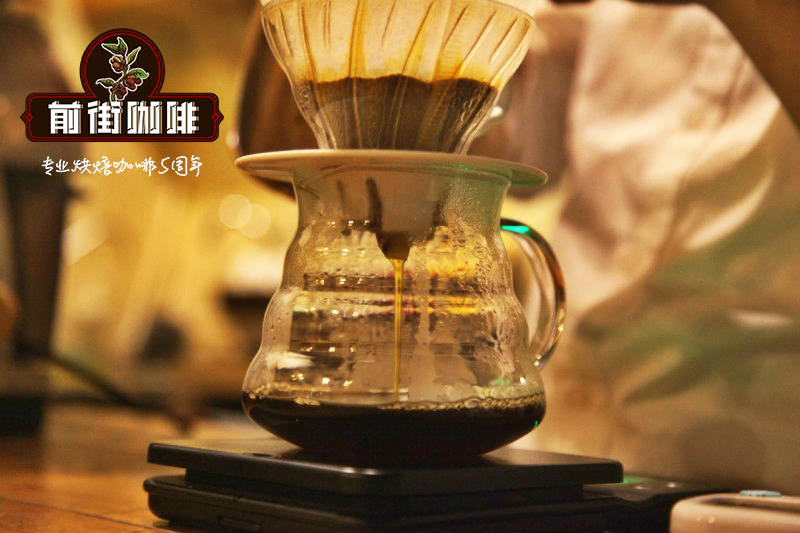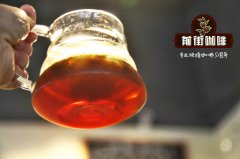Cultural characteristics of Brazilian Coffee introduction to the growth Environment and processing process of Brazilian Coffee

Professional coffee knowledge exchange more coffee bean information please follow the coffee workshop (Wechat official account cafe_style)
Coffee gives people the impression that it is an elegant and noble drink, and its rich aroma is infatuated. Coffee used to be a luxury drink, but now it has become a popular drink for leisure or afternoon tea, and even making coffee into all kinds of snacks is even more attractive. What is the charm of coffee? How is it planted?
When it comes to coffee, it is easy to think of some countries with hot climates, such as Central and South America, Southeast Asia, Africa. Wait. Although they are all called coffee, they are divided into many kinds according to their soil quality, rainfall, temperature and topography. Here we introduce Brazilian coffee.
< 1 > growing environment
Coffee grows mostly in sufficient sunshine (conducive to the harvest of coffee beans), rainy (annual rainfall of about 1000-1250 mm) and less frosting (because frost will kill coffee trees), while gentle slopes with good drainage and deep, fertile red soil or weathered soil are beneficial to coffee growth.
Most of the coffee is grown on high-altitude plateaus or slopes, with gravelly soil, but the terrain in Brazil is relatively flat. in order to adapt to local conditions, scientists have studied another cultivation method so that it can also grow in lower and flat areas. it is different from the traditional method of planting under proper shade at high altitude.
The coffee garden in Brazil is located at a lower altitude and grows directly in the sun, so that coffee can grow faster, but its taste is not yet fully developed, so the beans are not solid, sour and woody, suitable for drinking with other coffee.
< 2 > Coffee processing
Now the coffee we drink is actually completed through many formalities, and the coffee beans harvested generally go through multiple procedures to the mellow coffee we drink, and the steps are as follows:
1. Harvest: the harvest of coffee fruits depends on manual processing, and many of them are picked from the trees.
two。 Processing: there are two ways to process coffee fruit
i. Sun method: spread on the ground for about 12-15 days, direct exposure, after drying, directly remove the pulp, remove the bean shell, the nuts taken out are not complete, the taste is poor, when it rains, it is easy to have miscellaneous smell due to fermentation, but the cost is low.
ii. Washing method: it is a more progressive method, it only takes 20 murmur24 hours, after fermentation, the pulp becomes the one with shell (drum beans), after being picked up and dried, the bean shells become clean green beans, clean and without miscellaneous flavor, the taste is fresh and mellow, the time required is short, the beans are complete, the bad beans are less and the cost is higher.
3. Roasting: after roasting, the color of raw coffee beans changes from green to brown, and the aroma of coffee is excited. Coffee beans from different areas have different uses and are roasted to different degrees.
4. Blending: after the coffee beans are roasted, in addition to individual coffee, we mix all kinds of coffee according to their characteristics into comprehensive coffee with different tastes to meet the needs of different tastes and different cooking methods.
5. Grinding: grind to an appropriate thickness according to different cooking methods.
< 3 > the characteristics of Brazilian coffee
Brazilian coffee grows at low altitude and has poor physique and disease resistance. it tastes elegant and tastes graceful with a dry method, and its flavor is moderate.
Little Jerry state Monkian coffee uses the traditional Brazilian 100% sun treatment, the direct impact on the flavor is with a very comfortable, slippery, non-disturbing fermented flavor, used for the preparation of espresso, is perfect! Brazilian coffee is generally not acidic, and even if it has good acidity, it is usually mediocre. Saint Lauren round bean coffee shows delicious acidity under light roasting, with a very comfortable sweet, light drupe flavor. Although it is tanned coffee, it tastes clean and has no uncomfortable odor.
It is generally believed that Brazilian coffee tastes flat and mild, and its beans have obvious drupe flavor, strong consistency, low acidity and comfortable sweetness, so it is the best choice to mix with other coffee, because of the government's industrial policy. Brazil produces coffee of average quality, but not many excellent grades. One of the most famous is Santos Coffee < Santos >, which is mainly produced in < Sao Paulo >, Sao Paulo State. Because the variety is Coffee Arabica Bourbon, it is also called Bourbon Santos. It tastes round, neutral, with moderate acid, and can be boiled directly or mixed with other kinds of coffee beans to make mixed coffee.
Important Notice :
前街咖啡 FrontStreet Coffee has moved to new addredd:
FrontStreet Coffee Address: 315,Donghua East Road,GuangZhou
Tel:020 38364473
- Prev

Mocha coffee Yemeni mocha is good? Does mocha mean mocha pot?
"Mocha Coffee" Yemeni mocha, what exactly is "mocha"? Is the mocha good? Does mocha mean mocha pot? There are many answers to this question. Some people say that mocha is a certain place of origin, and some people remember that mocha is sweet chocolate coffee. In fact, authentic mocha coffee is only produced in the Republic of Yemen in the southwest of the Arabian Peninsula and grows at an altitude of 3,000 to 8.
- Next

The Cultural background of Brazilian Coffee, the largest country in Coffee production in the World
Professional coffee knowledge exchange more coffee bean information please follow the coffee workshop (Wechat official account cafe_style) < 1 > Brazil < Brazil > Brazil's official country name is Federative_Republic_of_Brazil, the regime is the Federal Republic, after many migrations, the capital is now located in Brasilia < Brasilia >, the country is divided into 21 states, four places and one special.
Related
- Detailed explanation of Jadeite planting Land in Panamanian Jadeite Manor introduction to the grading system of Jadeite competitive bidding, Red bid, Green bid and Rose Summer
- Story of Coffee planting in Brenka region of Costa Rica Stonehenge Manor anaerobic heavy honey treatment of flavor mouth
- What's on the barrel of Blue Mountain Coffee beans?
- Can American coffee also pull flowers? How to use hot American style to pull out a good-looking pattern?
- Can you make a cold extract with coffee beans? What is the right proportion for cold-extracted coffee formula?
- Indonesian PWN Gold Mandrine Coffee Origin Features Flavor How to Chong? Mandolin coffee is American.
- A brief introduction to the flavor characteristics of Brazilian yellow bourbon coffee beans
- What is the effect of different water quality on the flavor of cold-extracted coffee? What kind of water is best for brewing coffee?
- Why do you think of Rose Summer whenever you mention Panamanian coffee?
- Introduction to the characteristics of authentic blue mountain coffee bean producing areas? What is the CIB Coffee Authority in Jamaica?

